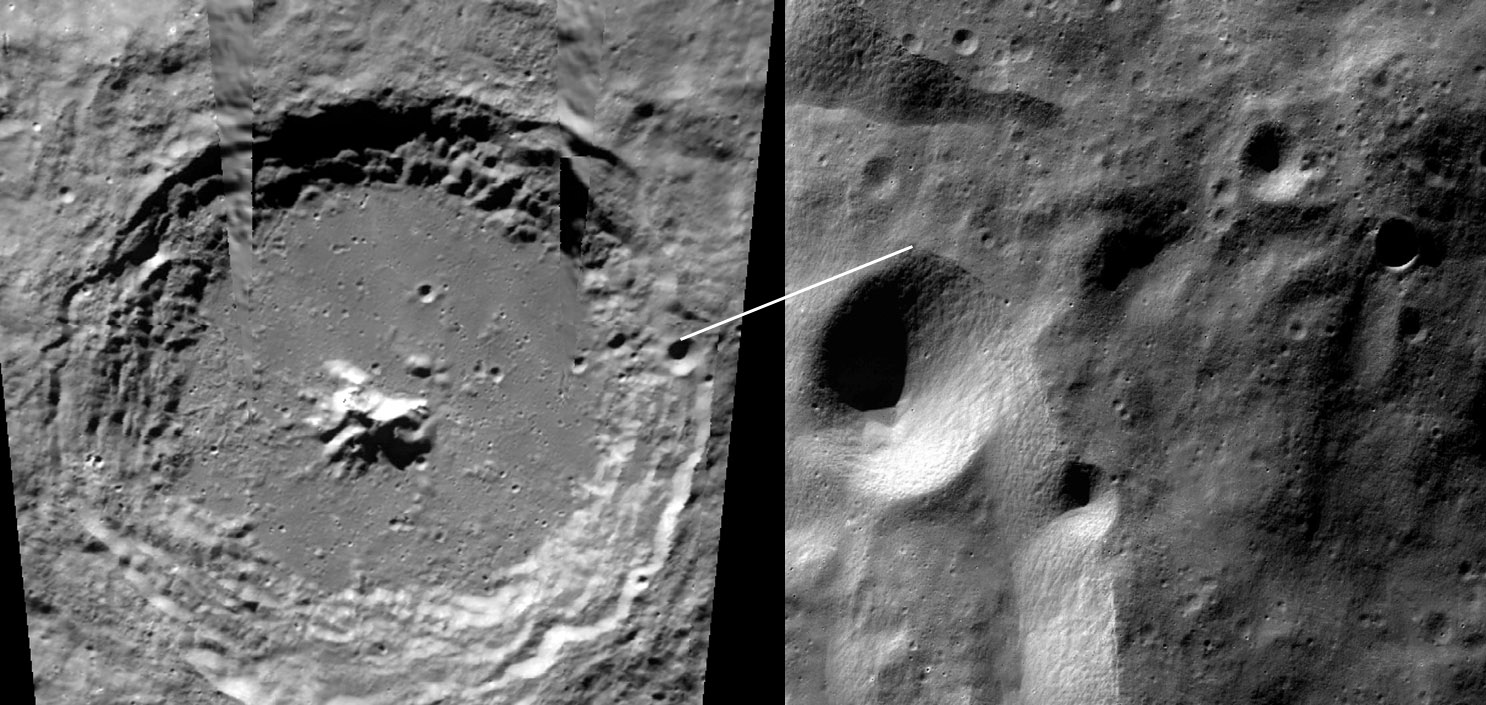November 18, 2008
Half Crater

right image from Chandrayaan-1 from the Indian Space Research Organization, and left from Clementine via USGS Map-A-Planet
India has released two more high resolution images from the Terrain Camera on their lunar orbiter Chandrayaan-1. The scene to the right is a reduced version of a high resolution image that was identified as being part of the rim of the 111 km wide crater Moretus. To provide context - and an index of how good the new image is - the left side shows the Clementine view of Moretus. The white line connects the northern edge of a 6 km crater that is common to both images. What is remarkable is the little (about 1.8 km diameter) crater just below that is cut in half by the rim of Moretus. I assume that such a small crater could not have survived if it existed prior to the formation of Moretus, so it must have formed after Moretus, But its missing half is hard to explain. Since the crater formed where its right half now is, does that mean that the left half never formed because there were no rocks there? Or did the left half simply slide down the steep slope? There isn't much evidence of debris from it at the bottom, so I guess that the left side formed in the lunar sky - in other words, there never was a left half. Just looking at the Clementine image we never would have realized this fascinating problem existed! Congratulations to India and keep the press release images coming!
Chuck Wood
Technical Details
Nov 15, 2008. Terrain Camera.
Related Links
Rükl plate 73
Yesterday's LPOD: Sunset & Moonrise
Tomorrow's LPOD: Unfamiliar View
COMMENTS?
Register, Log in, and join in the comments.



